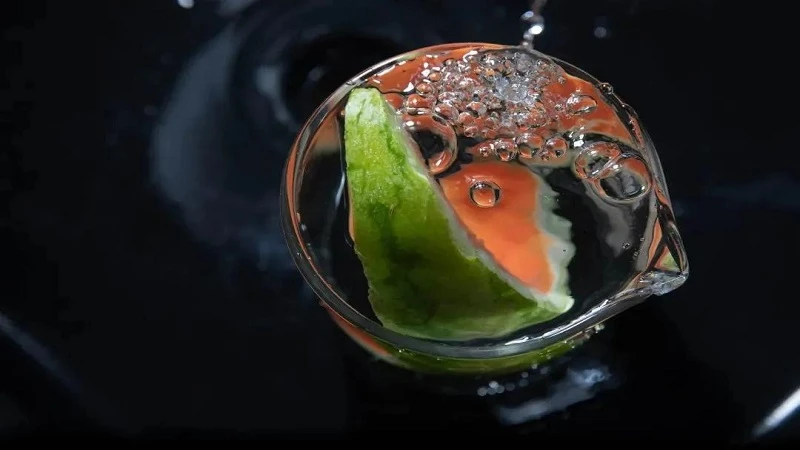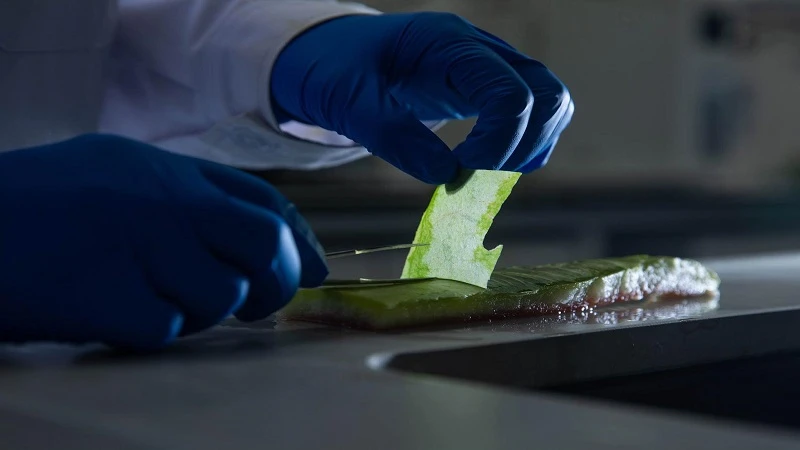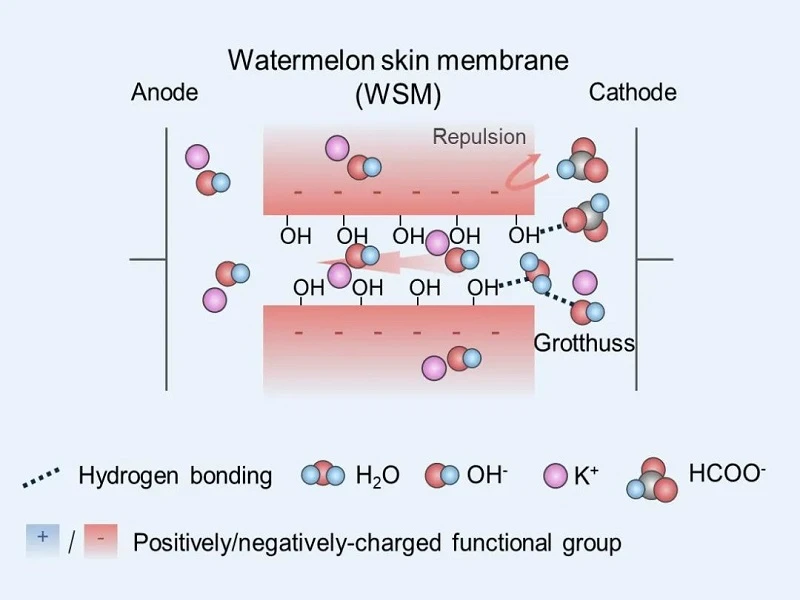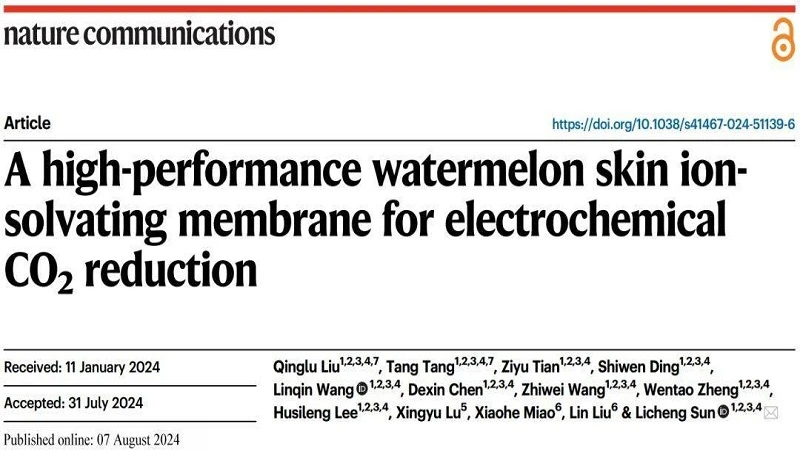In the race toward improving renewable energy technologies, researchers constantly seek innovative materials that can increase efficiency while reducing costs. Sometimes, nature provides the most unexpected sources of inspiration. One such example is a recent breakthrough by a research team at Westlake University, led by Professor Sun Licheng. They developed a new ion transport membrane (ITM) based on the unique properties of watermelon rind. What began as a serendipitous discovery during a late-night experiment has now evolved into a promising solution for various energy conversion systems, including fuel cells and electrochemical carbon dioxide (CO₂) reduction reactions. This development highlights how natural materials can offer fresh approaches to solving complex technological challenges.
A Serendipitous Discovery
The journey toward this discovery started in 2021 with a surprising observation in the lab. During a long work session, researchers Liu Qinglu and Dr. Tang Tang, members of Professor Sun's team, placed a watermelon in a freezer for a quick snack break. Days later, when they retrieved the watermelon from the freezer, they noticed that the rind had naturally separated from the fruit in the form of a thin, transparent membrane upon thawing. This seemingly trivial observation triggered a creative hypothesis: could the watermelon rind function as an ion transport membrane?
Curiosity piqued, the team decided to test the membrane in an electrochemical CO₂ reduction reaction—a process used to convert CO₂ into useful products like fuels. To their surprise, the watermelon rind membrane performed exceptionally well, rivaling, and in some cases outperforming, commercially available ion-exchange membranes. This marked the beginning of an in-depth investigation into the properties of watermelon rind and its potential application in energy technologies.
The Science of Ion Selectivity Behind Watermelon Rind
Ion selectivity is a crucial property for membranes used in electrochemical processes. The ability to allow certain ions to pass through while blocking others can significantly improve the efficiency of energy conversion systems. In this case, the watermelon rind membrane exhibited excellent selectivity for hydroxide ions (OH⁻), enabling their smooth passage while blocking sulfate and other unwanted ions.
The research team delved deeper into the structure of the watermelon rind to understand the mechanism behind this ion selectivity. They discovered that the subcutaneous layer of the rind contains nanoscopic channels filled with pectin, a naturally occurring polysaccharide. These channels form micropores that create a continuous hydrogen-bond network. It is this network that facilitates the efficient transport of hydroxide ions.
Professor Sun offered a simple analogy to explain the process: "The micropores and hydrogen-bond network act like a superhighway for hydroxide ions, allowing them to travel quickly and efficiently. Meanwhile, other ions, like sulfate, encounter roadblocks because they are repelled by the carboxyl groups in pectin and cannot pass through the hydrogen-bond network."
The team's research also highlighted the role of electrostatic repulsion in enhancing the membrane's selectivity. The carboxyl groups in pectin carry a negative charge, which repels similarly charged ions like sulfate. This additional layer of selectivity ensures that only the desired ions, such as hydroxide, can pass through the membrane, making it highly efficient for use in energy applications.
Watermelon-Inspired Membranes: A Solution to Ion Transport Challenges
Ion transport membranes are critical components in a wide range of renewable energy technologies, including fuel cells, water electrolysis, and CO₂ reduction processes. However, conventional membranes often face significant limitations, such as low efficiency, high cost, and environmental concerns regarding the materials used in their production. The discovery of the watermelon rind membrane presents a potential solution to many of these challenges.
One of the most striking features of the watermelon rind membrane is its superior ion conductivity. In tests, the membrane was able to accelerate the transport of hydroxide ions even faster than the electrolyte solution itself, demonstrating its effectiveness as an ion-exchange material. This high level of performance could lead to more efficient fuel cells, electrolysis systems, and other renewable energy devices.
Moreover, the membrane's natural origin offers additional advantages. Watermelon rind is a low-cost, abundant, and biodegradable material, making it an eco-friendly alternative to synthetic membranes. By utilizing natural materials in high-tech applications, researchers are opening up new pathways for creating sustainable, efficient energy systems.
Building on this success, Professor Sun's team has already begun developing new types of anion-exchange membranes based on the insights gained from studying watermelon rind. These membranes are being tested for use in water electrolysis and electrochemical CO₂ reduction reactions, where they are expected to significantly improve the efficiency of these processes. If the current testing continues to show positive results, these membranes could represent a major step forward in the development of next-generation renewable energy technologies.
Expanding the Impact: From Watermelon to the Future of Renewable Energy
The potential applications of watermelon rind-inspired membranes go beyond just ion transport. This discovery opens the door to a broader exploration of how other natural materials could be used in energy technologies. Nature is full of structures with unique properties that have evolved over millions of years, and researchers are increasingly looking to these materials for inspiration.
For example, the pectin-filled channels in watermelon rind are similar to structures found in other fruits and vegetables. This raises the possibility that other food waste materials, such as orange peels or banana skins, could also be repurposed for use in energy technologies. Such innovations could help address both environmental and economic concerns by reducing waste while improving the efficiency and sustainability of renewable energy systems.
The interdisciplinary nature of this research is also worth noting. The success of the watermelon rind membrane is the result of collaboration between chemists, biologists, and engineers, all working together to explore the intersection of natural materials and advanced technologies. This type of cross-disciplinary collaboration will be essential as the world continues to seek solutions to the challenges of climate change and energy sustainability. As the research moves forward, Professor Sun and his team are optimistic about the potential of their discovery.




